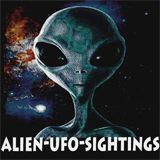Bad-Luck Saucer
Con artists that mated flying saucer tech-tomfoolery to promises of quick returns for smart investors might prosper . . . for a while. In Baltimore in 1957, a fifty- one-year-old man named Otis T. Carr sold stock in OTC Enterprises, a company he had established two years before. Otis Carr’s product was free energy, and when enough investors had come on board, Carr would undertake the final work on his invention, an OTC-XI flying saucer powered by an “electronic accumulator.” Once the technology proved itself in a successful demonstration, there would be millions for all.
Carr collected hundreds of thousands of dollars while based in Baltimore.
Investors, however, wanted to see a return on their investment, so in 1958, Carr moved his operation from Baltimore to Oklahoma City. A man named Norman Colton handled OTC public relations there, and a contactee named Wayne Sulo Aho became “director of public education,” to assist with OTC’s day-to-day operations.
UFO-centric investors grew increasingly excited by Aho’s status as a contactee, and thanks to work done by Colton, the general public, too, was on board with OTC’s saucer/free energy idea. Colton announced the big unveiling for April 19, 1959, at Oklahoma City’s Frontier City amusement park. Hundreds gathered to witness the free-energy flight of OTC’s saucer. The crowd milled about excitedly and waited.

Neither Otis Carr nor the flying saucer appeared.
When local reporters called at Carr’s home, the inventor claimed illness. A day or two later he said the saucer had developed “a mercury leak.” When reporters showed up still later, Carr announced that the saucer had been accidentally destroyed by fire.
An open letter from Aho, typed on OTC Enterprises letterhead and distributed to news outlets and flying saucer newsletters, enumerated the troubles, and promised that “all assemblies and circuits will be checked and tested for performance.” And then Aho dropped the bombshell: “We are not announcing a flight date and do not plan to announce it in advance.” Christopher Columbus, Aho wrote, “had no deadline for sailing the ocean.” (The open letter goes on to modestly invoke the patient work of Copernicus, Edison, and Tesla.) Later in 1959, the state of Oklahoma indicted Otis Carr for illegal stock sales.
He was brought to trial and convicted. The court levied a $5,000 fine, which Carr was unable to pay except by working in jail for a dollar a day.
Charges against Wayne Sulo Aho were dropped. PR man Norman Colton may have been the brightest of the bunch: he left Oklahoma before charges could be filed. He later formed a public free-energy company he called the Millennium Agency.
The same year Otis Carr kicked off his saucer scam, 1957, a sixty-year-old grain buyer named Reinhold Schmidt claimed to have entered a UFO in Kearney, Nebraska, to chat with the three men and three women inside. He described the aliens as dark-haired and suntanned, and of average height. They spoke in German, which, Schmidt supposed, was normal enough because he understood the language. The ship’s instrument panel bore Arabic and Roman numerals. The aliens “glided” across the deck rather than walked. And in a faintly ominous turn, the visitors asked Schmidt if he knew anything about the U.S. satellite program.
Despite a past prison stretch for embezzlement, and a brief commitment to Minnesota’s Hastings State Hospital (formerly the Hastings Asylum for the Insane), Schmidt made some money on the UFO lecture circuit and published a book, The Kearney Incident Up to Now. In 1961, a California court found him guilty of swindling a Bakersfield widow out of $5,000 in a mining scheme based on extraterrestrial “free energy crystals.” The widow, Eva Newcomb, described for the jury Schmidt’s claim that the crystals could heal disabled children.
